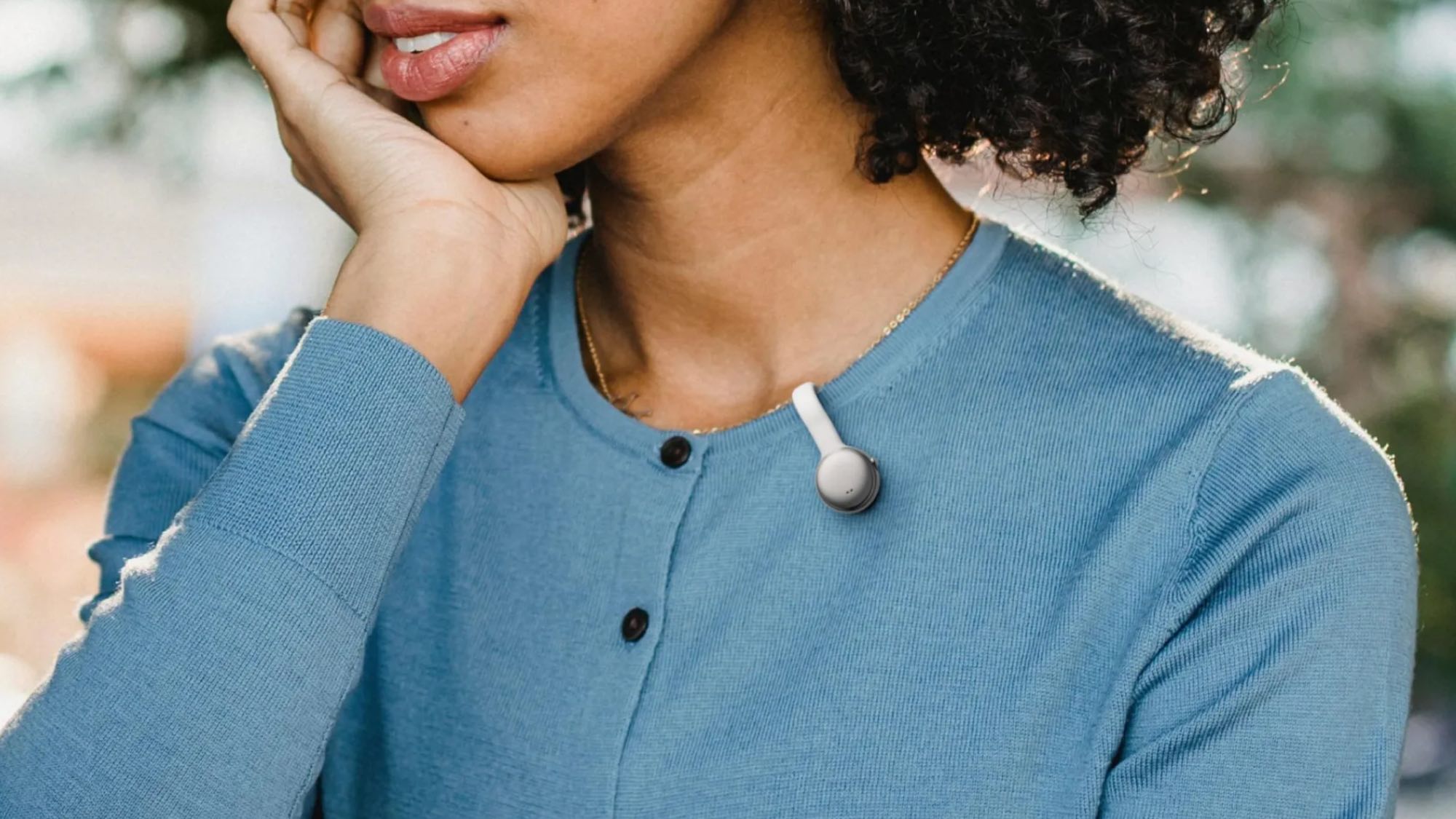Tom's Guide Verdict
The range-topping Xperia XZ2 Premium adds a 4K display and dual cameras to Sony's formidable Android flagship, but the phone remains stuck in the past.
Pros
- +
4K HDR display
- +
Great low-light photos and video
- +
Flagship performance
Cons
- -
Very bulky
- -
Portrait Mode not available at launch
- -
Below-average battery life
- -
Dated software experience
- -
Too expensive
- -
No Verizon or Sprint support
- -
Only 64GB of built-in storage
Why you can trust Tom's Guide
Lukewarm smartphone sales aside, Sony has finally set about reinventing its handsets. Recent Xperia XZ2 releases have introduced a fresh design philosophy that differentiates the company's efforts from those of its Android rivals. Lately, we've been seeing some of the most exciting products to bear the Xperia name in a long time.
That brings us to the newest entry in this year's batch of range-topping Sony phones — the Xperia XZ2 Premium. At $999, you'd hope the XZ2 Premium would boast a few advantages over the $799 Xperia XZ2 and the $649 XZ2 Compact. And those advantages come in the form of an ultra-high-definition display and the first rear-facing dual-camera system the company has ever shipped.
Those are big additions — but then, they should be, because at $999, this is iPhone X money we're talking about. For anyone excited by the prospect of watching and recording 4K HDR video, the XZ2 Premium may justify that princely sum. But for the rest of us? Sony's effort is wrought with quirks and contradictions that betray its "premium" name.
Price and Availability
The Xperia XZ2 Premium begins shipping July 30 for $999 in only one configuration, with 64GB of internal storage and 6GB of RAM. There are two colors on offer — Chrome Silver and Chrome Black — and the phone comes GSM unlocked, so it will work on networks like T-Mobile, AT&T, MetroPCS and Cricket. You can't use it on CDMA networks like Sprint or Verizon.
There are perks for preordering, too. Sony is throwing in a pair of its Xperia Ear Duo wireless earbuds with the purchase of every XZ2 Premium before July 30. The Ear Duo is a bit unusual among Bluetooth headphones, as it is designed to invite ambient noise in while playing audio clearly. The accessory normally goes for $279 on its own.
Design: Bold and hardly beautiful
Figuratively speaking, the Xperia XZ2 Premium is a phone stuck between times — a confluence of Sony's penchant for stoic, imposing handsets and the company's newfound ambition to follow market trends toward smaller bezels and more curvaceous forms.
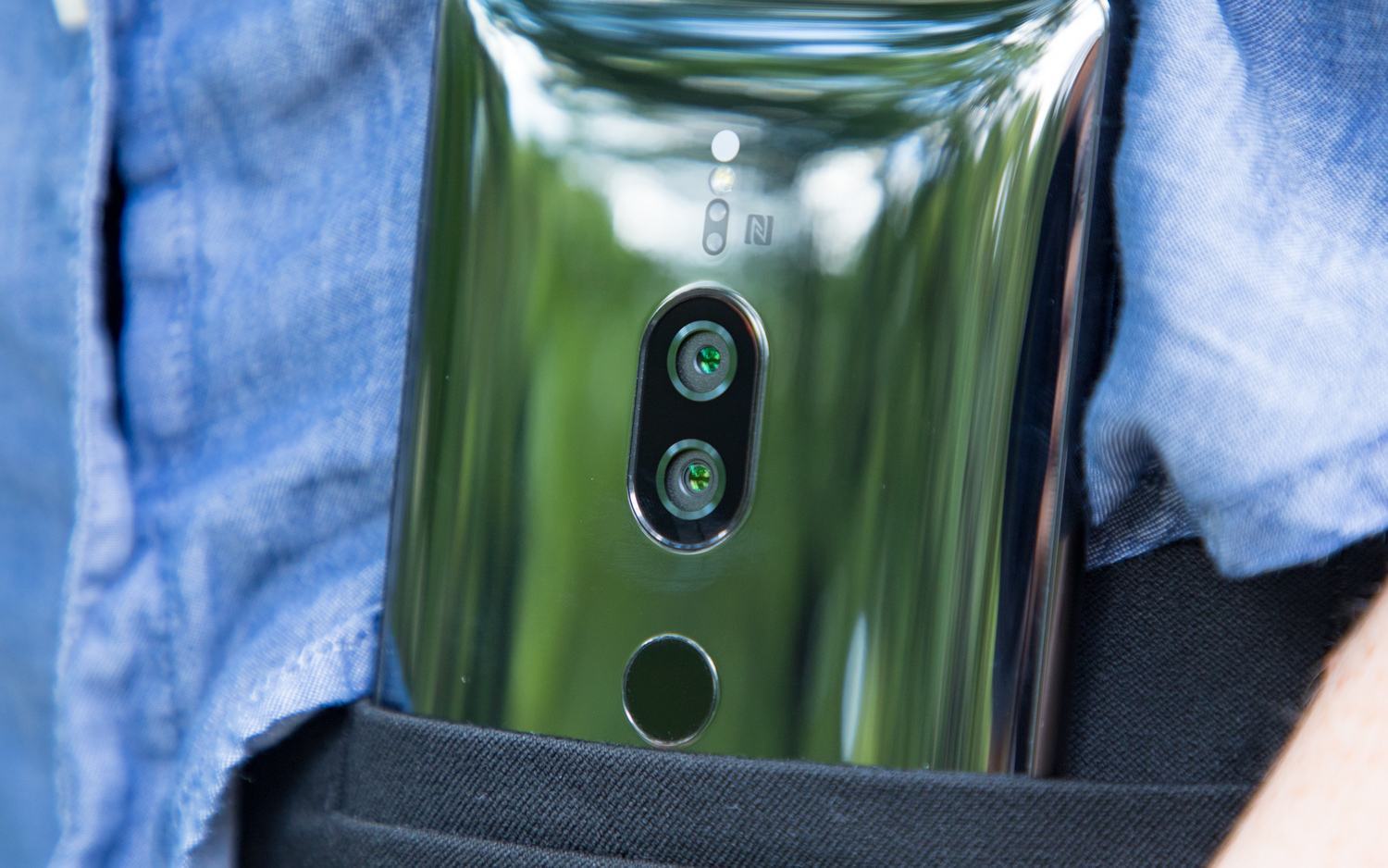
Literally speaking, it's a shiny brick, and it weighs a ton.
Get instant access to breaking news, the hottest reviews, great deals and helpful tips.
The weight is the very first thing you notice when you pick up the Xperia XZ2 Premium. At 8.3 ounces, the device tips the scales at an ounce heavier than the iPhone 8 Plus. It's also significantly thicker, with a domed back panel crafted from Gorilla Glass 5 that arguably makes Sony's big handset easier to hold in one hand than Apple's, but at the expense of an extra two-tenths of an inch in its profile.
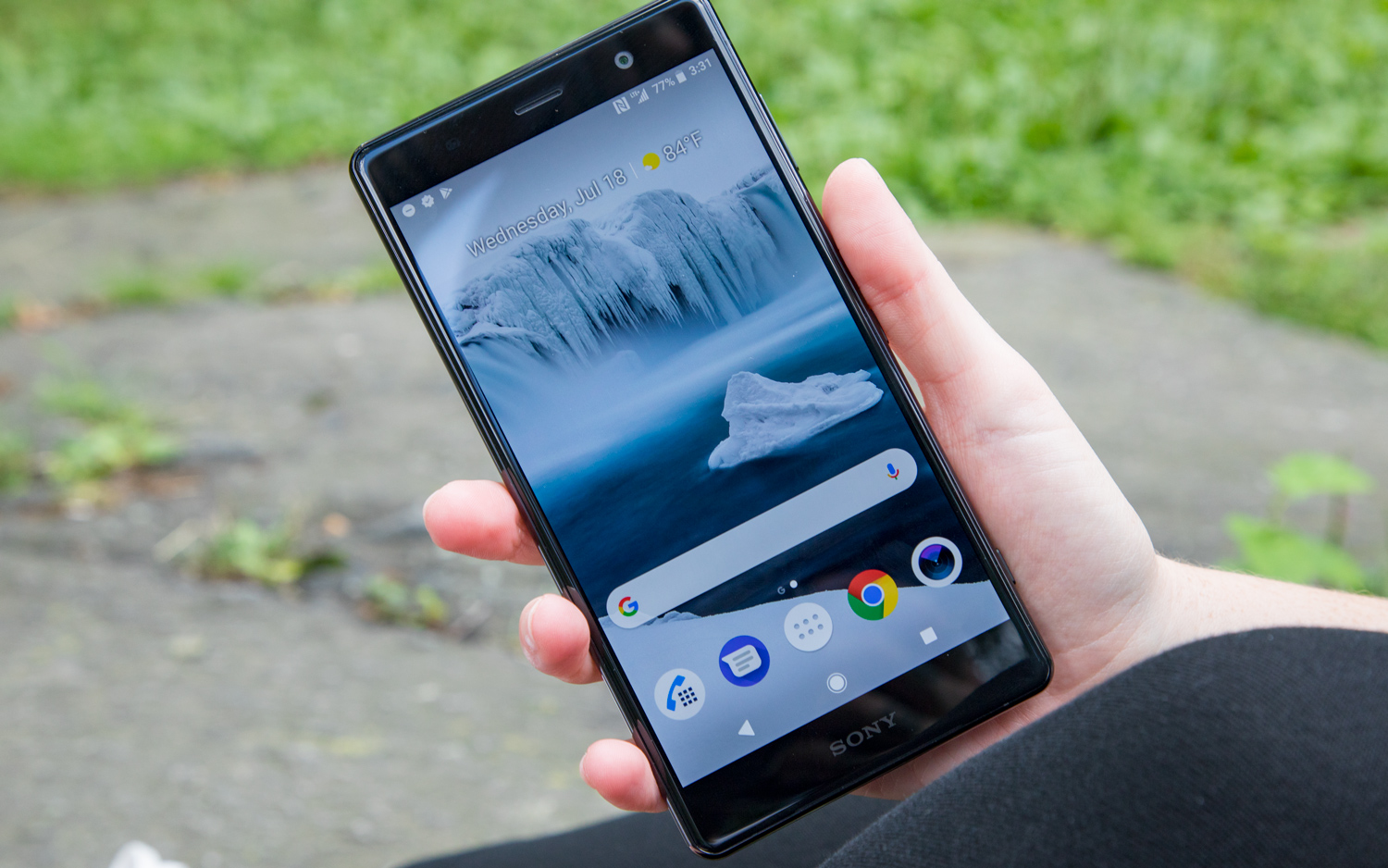
With that curve, the stereo front-facing speakers and the glossy aluminum frame, the XZ2 Premium feels a lot like a larger version of the existing XZ2. Unfortunately, that's more of a curse than a blessing.
In this age of narrower phones, the XZ2 Premium evokes a phablet from years gone by. It's too bulky in every dimension.
I'm willing to concede a bit of the extra plumpness on the diminutive XZ2 Compact, but the XZ2 Premium has a reasonably tall and very wide footprint, with a 16:9 display (owing to Sony's commitment to 4K content on this particular device) and chunky bezels. In this age of narrower phones, the XZ2 Premium evokes a phablet from years gone by. It's too bulky in every dimension.

To make matters worse, Sony's fingerprint sensor woes continue with the XZ2 Premium. The scanner has once again been placed near the center of the backside on this model, just as it was on the regular XZ2. It was a terrible idea then, and it's a terrible idea now. My index finger naturally gravitates toward the cameras, so it takes a frustrating effort of dexterity just to curl my finger downward to hit the sensor without dropping the phone. "Uncomfortable" barely begins to describe it.
MORE: A Guide to No Contract and Prepaid Phone Plans
At least a few of the other XZ2 devices' design positives — like IP68 water resistance, Qi wireless charging and dedicated camera shutter button — have been retained for the XZ2 Premium. There's no 3.5-millimeter audio jack, however, so you'll have to rely on the included USB Type-C adapter to use conventional headphones.
Display: 4K on a phone
The 5.8-inch, 3840 x 2160 LCD display on the Xperia XZ2 Premium may not seem very big on paper when more than a few phones from Sony's competitors have crossed the 6-inch threshold. But remember: This is a 16:9 panel, rather than an 18:9 one — so it appears larger in person than the numbers indicate.
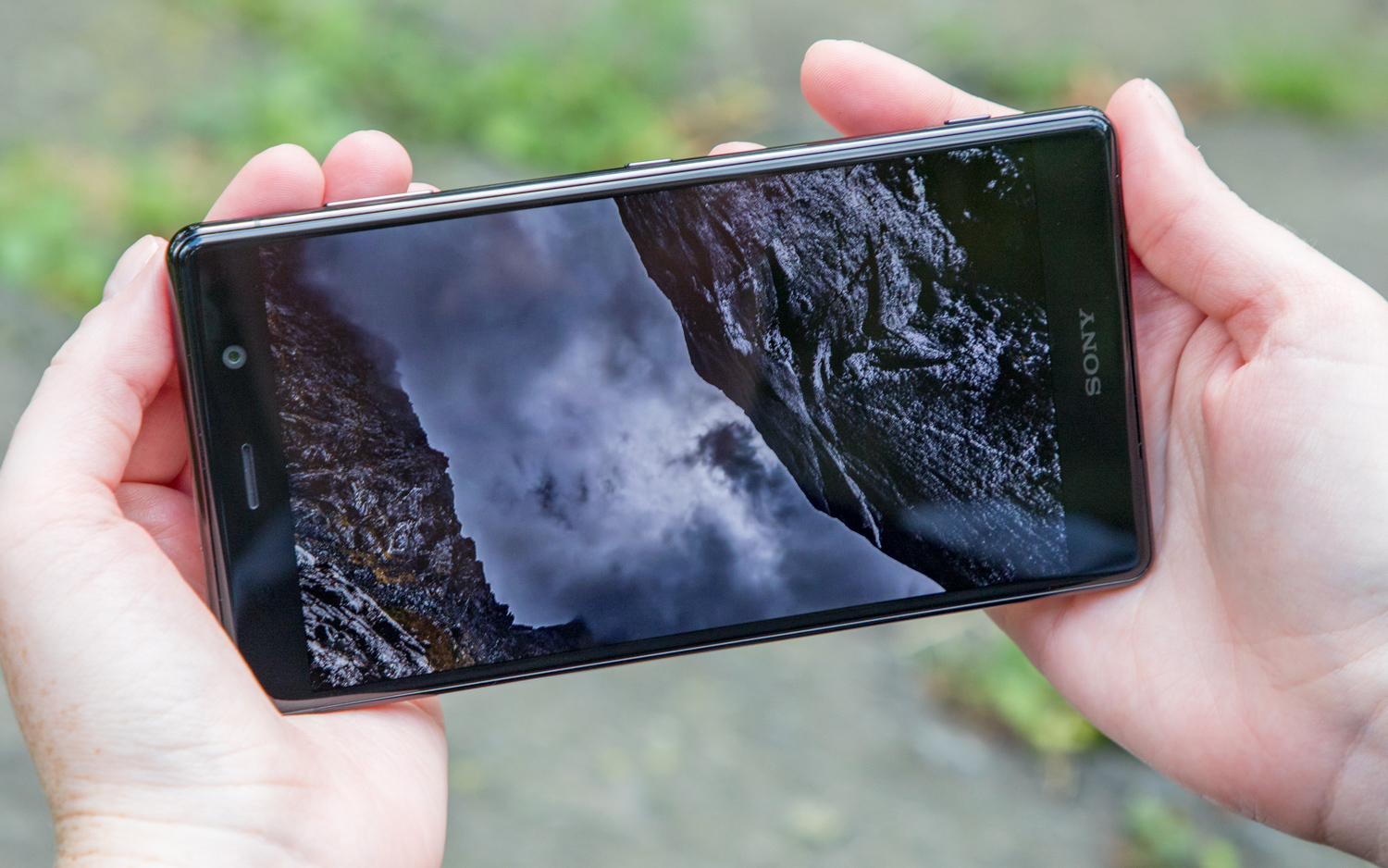
However, the XZ2 Premium's screen doesn't make efficient use of that real estate. The displays on the iPhone X, Galaxy S9 and OnePlus 6 nudge right up against the edge. It's a magical feat of engineering when phone makers cram ginormous panels into relatively compact bodies, but unfortunately, Sony couldn't pull off the same trick here.
Regardless, this is the sharpest display you'll find on any handset. At a staggering 760 pixels per inch, it even wipes the floor with the 570-ppi Galaxy S9. Truthfully, you don't notice it so much in regular usage, but that changes the moment you fire up a 4K film.
As I watched the trailer for the upcoming Predator reboot, I was impressed with the XZ2 Premium's ability to deftly capture the light glinting off the titular villain's armor, the intricate beads of rain and the intensity of the gunfire. These are the kinds of barely perceptible details that stand out with a bump in resolution; in such moments, Sony's device truly delivers every bit of the premium experience its name suggests.
It's somewhat disappointing, then, that for all the XZ2 Premium display's crispness, it's still outshone in other ways by OLED panels like those in Samsung's leading handsets.
While the XZ2 Premium nails those fine gradations of color and excellent contrast in dim scenes thanks to the display's HDR support, even the best LCD panels serve up washed-out blacks compared to their OLED counterparts, simply because those pixels remain lit even when they don't need to be.
A more surprising issue with the XZ2 Premium's display is that it just isn't as bright as we've come to expect for modern smartphones. The phone peaked at 442 nits, which is just below the 466-nit average among handsets. Colors appeared realistic in the default Standard profile, where the XZ2 Premium covered 129 percent of the sRGB color space and notched a Delta-E color-accuracy score of 0.43. (Numbers closer to 0 are better.)
MORE: The Best Cheap Unlocked Smartphones
Still, display aficionados will appreciate the level of control Sony gives users to customize the color profile to their liking. There are RGB and Super Vivid modes to satisfy both ends of the spectrum, and HDR for video can be activated at will. For what it's worth, the default profile favors a slightly cooler white balance, especially compared to the Galaxy S9+ on AMOLED Cinema mode. However, this too can be altered with an array of sliders.
Camera: Comes alive at night
Besides its 4K display, the Xperia XZ2 Premium's other standout features center on photography. The phone's dual rear cameras are the first of their kind from Sony, and they're unlike any we've seen before.
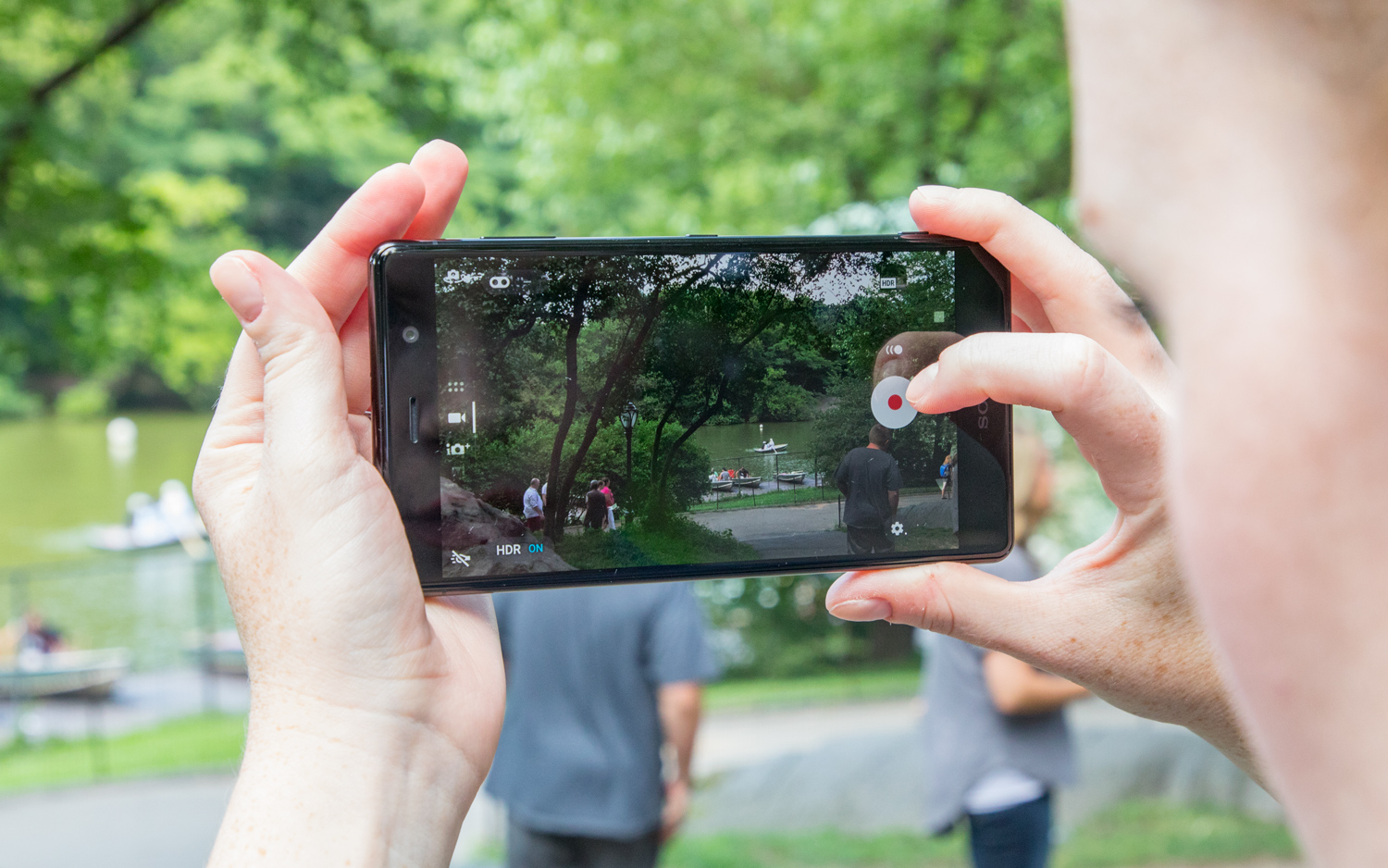
The XZ2 Premium pairs a 19-megapixel, f/1.8 main sensor with a 12-megapixel, f/1.6 monochrome secondary shooter. The former does the heavy lifting in most scenarios, while the latter picks up the slack when things get dim.
Now, using a monochrome sensor strictly to capture luminosity is nothing new; the Huawei P20 Pro, Moto Z2 Force and even the oft-maligned Essential Phone all take a similar tack. What makes the XZ2 Premium unique is its superhigh ISO: 51,200 for photos and a smartphone-leading 12,800 for video. The device can even record in 4K resolution with high dynamic range.
For all the attention Sony has given low-light superiority, it's encouraging to know the XZ2 Premium can still impress in the sun. Those who lean toward warmer, boosted hues will likely favor the iPhone X's rendition of this picturesque late-afternoon summer scene. But the XZ2 Premium's effort is more balanced and realistic, not to mention noticeably brighter within the shadows.
On the flip side, the iPhone X turned in a much more satisfying shot of a row of kayaks on the banks of a creek. While the XZ2 Premium nails the finer details, like the scrapes and scratches on the boats, there's no question that the fiery reds and calming blues are conveyed better on Apple's device. Unlike the Xperia, the iPhone X also managed to avoid blowing out the highlights in the background.
When night fell, it was time to find out whether Sony's kitchen-sink approach to low-light photography actually yielded results. For these comparisons, we pitted the XZ2 Premium against the Galaxy S9+, one of our favorite mobile cameras for shooting in the dark.
As it turns out, the Xperia can more than hold its own against Samsung's flagship shooter, even in the trickiest of photo ops. The XZ2 Premium actually delivered a better-exposed shot in the example above, though the ISO sensitivity may have done more harm than good, leading to a noisier, oversharpened portrait.
The XZ2 Premium's dual cameras can more than hold their own against those of the Galaxy S9+, even in the darkest of photo ops.
Speaking of portraits, this seems like as good a time as any to point out that the XZ2 Premium isn't launching with a bokeh-effect Portrait mode (though we're told it will arrive in an update before the end of the year). It's baffling that Sony finally went to the trouble of producing a dual-camera phone years after its competitors, only to fail to include the one feature that customers actually seek out dual-camera phones for.
When we moved on to a scene of a neon-bathed street corner, the Galaxy S9+ again edged out the XZ2 Premium, with slightly better color and definition in the murkier areas of the trees and the building to the left. That said, the difference is negligible — both phones are fantastically well matched in low light.
Given how admirably the XZ2 Premium performed in stills, we weren't surprised to find the handset excel in video — especially with the help of Sony's Ultra High Sensitivity mode. This feature leverages the monochrome lens to improve videos in much the same way it enhances stills. Using it prevents 4K HDR recording, but it's preferred in nighttime scenarios like the one above. Ultimately, the setting helped the XZ2 Premium capture a clip that was sharper, and yet somehow less grainy, than the Galaxy's best effort.
There's a lot less going on with the XZ2 Premium's 13-megapixel selfie cam, but at the very least, we're pleased to report that it's leagues better than that blurry 5-MP offering in the other two XZ2 variants. That said, this front-facing lens still aggressively smooths over too much compared with the one found in Samsung's flagships.
Performance: As fast as the rest
Armed with a Snapdragon 845 processor and 6GB of RAM, the Xperia XZ2 Premium matches the specs of the Galaxy S9+ and the base model of the OnePlus 6.
Implementing the latest high-end Qualcomm silicon is table stakes for any Android flagship, especially one this expensive. You can rest assured that the XZ2 Premium is very snappy in day-to-day use, even in ways you might not expect. For example, I've noticed Sony sped up most of Android's animations, including app opening and screen rotation. This isn't rocket science — you can do the same with any Android phone via the Developer Options menu. But the fact that's it's been made the default behavior is a light touch that goes a long way.
It's disconcerting that the Xperia XZ2 Premium can be outpaced by a device that costs nearly half its price.
When it came to benchmarks, the XZ2 Premium proved consistent with leading Android handsets, and wasn't noticeably faster than the $799 Xperia XZ2. In Geekbench 4, a test that measures overall system performance, the Premium model mustered 8,465. That's in the same realm as the score from the Galaxy S9+, but 800 less than the mark from the 8GB variant of the OnePlus 6 — a phone that's $430 cheaper than Sony's latest handset and even comes with double the internal storage.
Thankfully, graphics performance struck a bit closer to the target. There, the XZ2 Premium registered 4,713 in 3DMark's Sling Shot Extreme OpenGL ES 3.1 test. That's a few points higher than the 4,634 from the Galaxy S9+ and not too far behind the OnePlus 6's 5,124.
MORE: 5 Ways to Speed Up Your Android Phone in Under 5 Minutes
As fast as the XZ2 Premium is, it's a tad disconcerting that it can technically be outpaced by a device that costs nearly half its price. And that's to say nothing of the elephant in the room: Apple's mighty A11 Bionic-powered iPhones, which continue to run laps around the best efforts Android manufacturers can churn out. Take the iPhone 8 Plus, which hit 10,472 in Geekbench 4. The same chip topped out at 10,354 in the iPhone X, and that's the kind of performance that's more befitting of a $1,000 phone.
Sony Xperia XZ2 Premium Specs
| Price | $999 |
| OS | Android 8.1 Oreo |
| Screen Size (Resolution) | 5.8-inch LCD (3840 x 2160) |
| CPU | Qualcomm Snapdragon 845 |
| RAM | 6GB |
| Storage | 64GB |
| microSD Slot | Yes, up to 512GB |
| Rear Camera | Dual: 19 MP (f/1.8); 12 MP (f/1.6, monochrome) |
| Front Camera | 13 MP (f/2.0) |
| Battery Size | 3,540 mAh |
| Water Resistance | Yes, IP68 |
| Size | 6.22 x 3.15 x 0.47 inches |
Battery: Smart but not long-lasting
Big 4K displays are nice to look at, but the downside is that they draw a lot of power. It's fortunate, then, that Sony took the opportunity to increase the size of the XZ2 Premium's battery to 3,540 mAh, whereas the XZ2 made do with a 3,140-mAh power pack.
Yet something appears to be amiss. Because even with that larger battery, the XZ2 Premium mustered only 9 hours and 29 minutes of streaming web pages over T-Mobile's LTE network. That's more than 2 hours less than the $799 XZ2 managed and 19 minutes below the smartphone average.
We ran our battery test again just to rule out any contingencies, and the phone actually performed worse by about 20 minutes. Lackluster longevity aside, at least the XZ2 Premium supports Qi induction pads for wireless charging and Qualcomm's Quick Charge 3.0 protocol. There’s also Sony's suite of battery-prolonging software, including the power-saving Stamina Mode, Battery Care and Qnovo Adaptive Charging.
Battery Care limits the amount of time the phone is fully charged, to prevent unnecessary stress while the device is plugged in. It monitors your charging habits and only tops off the final 10 percent of the battery right before it expects you to unplug it. Qnovo Adaptive Charging works more discreetly, adjusting power-delivery levels to prevent spikes that could damage the battery's life span.
Software: Oreo with quirks
As with the rest of Sony's flagship range, you can expect the latest version of Android — 8.1 Oreo — along with the company's typical suite of apps, on board the XZ2 Premium.
An update to Android P should follow later in the year, which we're eagerly anticipating because Sony's custom UI has been looking a little long in the tooth for a few years now. It's been mostly unchanged since the days of Lollipop, and Android is on the brink of a major overhaul with gesture controls and greater emphasis on predictive features, so the future looks bright.
Sony's 3D Creator app returns on the XZ2 Premium, allowing you to make printable models of everyday objects — even your friends' faces — by turning the phone's camera into a 3D scanner. There's the questionably useful Xperia Lounge, which surfaces apps and media handpicked by Sony, and some redundant system apps for things like the gallery and music player. Amazon also has solid representation out of the box, with its Shopping, Kindle and Prime Video apps all preloaded onto the device.
In other words, the XZ2 Premium brings very little in the way of new software experiences. The most notable addition would have to be Dynamic Vibration, a feature that syncs up the phone's oversize vibration motor to sounds coming through the speakers or a pair of headphones.
MORE: 10 Reasons Android Beats the iPhone
Dynamic Vibration first launched on the regular XZ2 and has seemingly undergone no changes for the Premium variant. That's unfortunate, because the fidelity of the feedback is still lacking. This isn't like the slight kickback you get from a solid-state MacBook trackpad or the feeling of ice cubes rattling when shaking a Nintendo Switch Joy-Con. The XZ2 Premium's vibration resembles that vague buzz you get from any phone, only more. Truthfully, it adds nothing to the immersion of watching media on the go. Fortunately, you can turn it off right from the volume slider.
Bottom Line
Between its ultrasharp display and state-of-the-art dual cameras, the Sony Xperia XZ2 Premium represents the best of Sony's mobile technologies realized in one package. And yet, in far too many ways, it still feels like a flagship from the past.
True, it has a 4K HDR screen. But the industry is headed toward an OLED future, and the XZ2 Premium's panel still relies on an LCD screen that isn't even very bright. Yeah, it's got two cameras capable of astronomically high ISO for a phone, but in practice, the shots and videos it captures aren't noticeably better than the competition's.
All of this would be peachy in a $700, or perhaps even $800, device, but Sony is asking a grand for the XZ2 Premium. And when you're demanding that kind of investment from your customers, there's no wiggle room for being as good as the rest. You have to lead the pack, and the XZ2 Premium isn't a leader.
The outlook gets even more dismal once you see past the device's hallmark features and consider the bigger picture. The "premium" Xperia was no faster than the XZ2 or the XZ2 Compact in our benchmark tests, or other handsets that cost hundreds less. The Premium's design is staid and uncomfortably bulky, the battery life isn't anything special, and the phone comes with just 64GB of storage. And despite all the attention lavished on those cameras, Sony is still ironing out the kinks in its Portrait Mode, while Apple, Samsung and Google have perfected theirs.
A premium product should inspire customers, inform its successors and do something its competitors can't — and none of that describes the XZ2 Premium. If this is the finest phone Sony can build when the chips are down, perhaps its definition of the word isn't what it ought to be.
Credit: Tom's Guide
Adam Ismail is a staff writer at Jalopnik and previously worked on Tom's Guide covering smartphones, car tech and gaming. His love for all things mobile began with the original Motorola Droid; since then he’s owned a variety of Android and iOS-powered handsets, refusing to stay loyal to one platform. His work has also appeared on Digital Trends and GTPlanet. When he’s not fiddling with the latest devices, he’s at an indie pop show, recording a podcast or playing Sega Dreamcast.
-
mike.allen.ccna This part is incorrect, "There are perks for preordering, too. Sony is throwing in a pair of its Xperia Ear Duo wireless earbuds with the purchase of every XZ2 Premium before July 30. The Ear Duo is a bit unusual among Bluetooth headphones, as it is designed to invite ambient noise in while playing audio clearly. The accessory normally goes for $279 on its own."Reply
Either Sony or Amazon pulled a fast one and put that out in every tech site, but pulled the deal after the first day of pre-orders. I ordered mine on Amazon on July 21st, a full 9 days before it is being released and I just assumed I was getting the headphones. Someone on Reddit pointed out that they pulled the offer. So I'm really conflicted, I really wanted this phone, but I'm annoyed at their shady sales tactic. -
fxcross "Very bulky"Reply
Aube is big enough that require more space, its a fact
"Portrait Mode not available at launch"
How this is a bad thing???
"Below-average battery life"
Im really sure than the XZ2P its on the average performance in b.l.
"Dated software experience"
It´s not more dated than the Google Pixel 2 XL rigtht now.
"Too expensive"
It is, but Samsung and Apple too, it should not be a problem, in fact ,this new hardware worth it
"No Verizon or Sprint support"
I really dont care about verizon or Sprint, this has nothing to do with the device itself in first place.
We know that Tom'sGuide's reviews are very shameless, but this one is hypocritical. -
vandricg You rant about portrait mode missing so much?Reply
But I cant see competition doing 12800 ISO video for extra lowlight, or 10bit HDR video, or predictive capture photo, or 1080p 960fps video, or 3D scanning...
Most of competition phones cant give balanced good surround sound, even though they implemented Dolby surround.
Most compeition can do good photos, but obviously this phone is better than the rest at it.
And that OLED rant, although this screen is actually superb top class one?
Prefering subjectively oleds, portrait modes, certainly animojis too, neglecting the just better photo and video camera, and avoiding to give credit to all special unique features this one phone offers.
6/10???
How much did you score iphoneX with weaker camera, sound, screen? You certainly didnt mind its price did you, or 64gb it had, or 3 gb ram it had, did you?
Or score S9+ with weaker sound, cameras, performance? You certainly didnt complain about 64gb for the basic 950 bucks price there...

